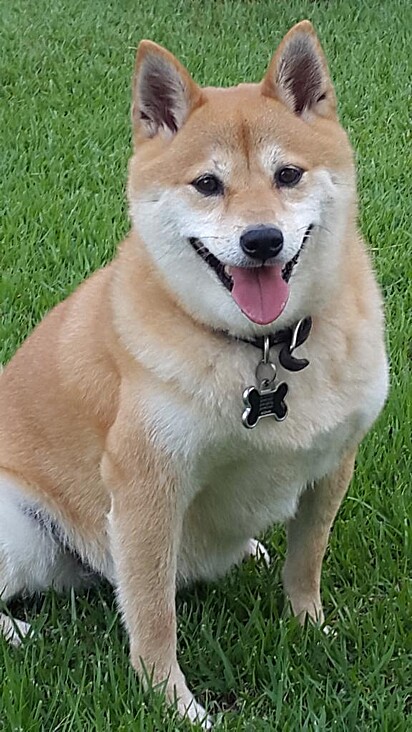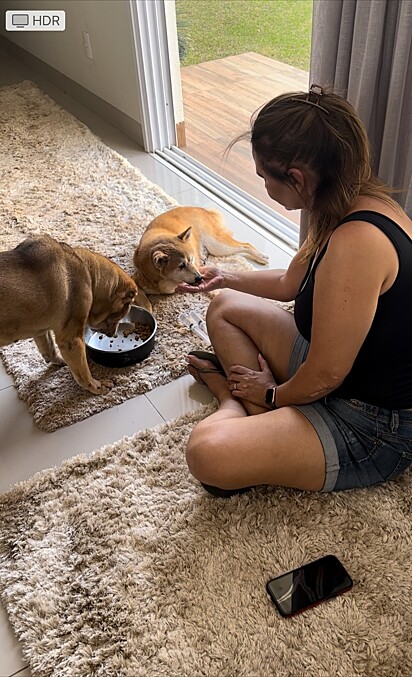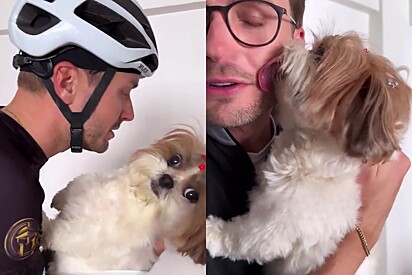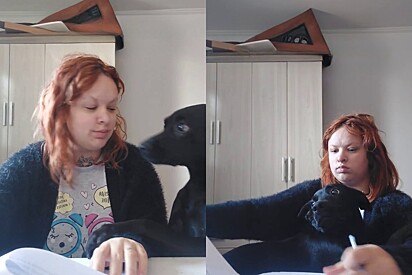Owner Shares What It’s Like to Care for a Dog With Alzheimer’s and It’s Heartbreaking and Beautiful
Josue describes the constant attention that the dog demands, comparing it to the care of a baby who can’t be left alone.
By Gabriele Tancredo Stella in Dogs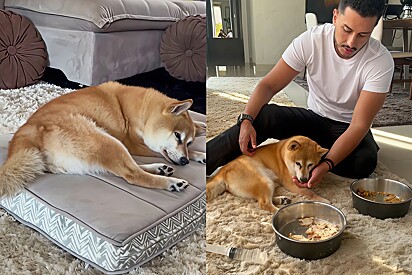
Josue Moreira Neres, the owner of a Shiba Inu named Max, shares daily what it’s like to live with a dog diagnosed with canine Alzheimer’s.
Smart and loving, Max was brought from Arizona by the family and had always responded well to commands—until his behavior changed completely.
Two years ago, Max stopped responding when called, lost his usual excitement, and showed signs of disorientation, such as barking for no reason and walking in circles.
In an interview with Amo Meu Pet (our Brazilian website about pet news), Josue explains that in the beginning the family thought it was because of the dog’s old age.
“But when those behaviors started to change, we got worried. He didn’t respond to his name, didn’t have much enthusiasm when we got home, and lost interest in his ball,” he recalls.
With these concerning changes, Josue’s son, who is a doctor, suggested an appointment with a veterinary neurologist.
After talking about the symptoms, the family learned about the chance of a painful diagnosis: the “Cognitive Dysfunction Syndrome” or “Canine Alzheimer’s”.
Tests were required to confirm canine Alzheimer’s.
Over time, the disease progressed, and Max, now 15 years old, faces significant challenges.
Muscle weakness, difficulty drinking water, and the loss of ability to perform basic tasks that are part of the family’s routine.
Josue describes the constant attention Max demands, comparing it to that of a baby that can’t be left unattended.

“He doesn’t know whether he wants to pee or poop. He slips and falls on the smooth floor, screams for no reason, gets stuck in corners of the house between chairs, growls when something bothers him, walks in circles, doesn’t respond to commands, and startles easily when touched,” he listed.
Palliative Treatment
To face the challenges of canine Alzheimer’s, the family tried several treatments. Initially, amitriptyline was recommended, but unfortunately, it worsened the crisis.
“We then opted for more natural approaches, such as Bio Florals for anxiety. It helped a lot at the time, but he still had barking fits at night,” he said.
However, the most positive response came from the treatment suggested by Josue’s son, Dr. Erick Neres, which involved replacing vitamins, minerals, and nutrients.
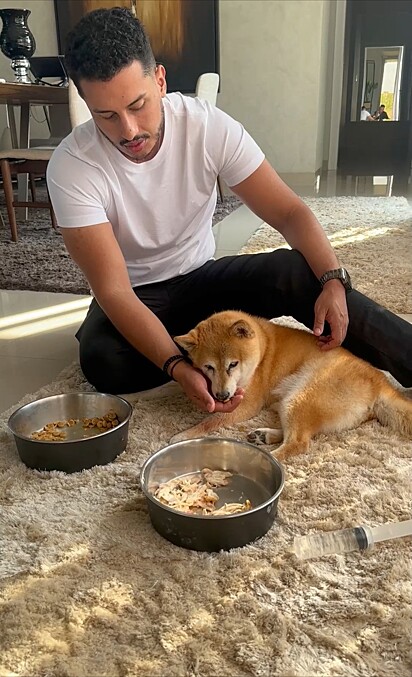
“He began to investigate the possibility of applying the same strategy he uses with his canine patients. Once again, Max improved considerably; the seizures that used to occur daily went from 2 to 3 times a week. Then he looked into the use of Cannabidiol (CBD) for dogs and, with the use of this, the seizures dropped to once a week at most,” he said.
Dedicated Routine
Josue highlights the importance of a dedicated routine, sharing that the family creates a suitable environment for Max, providing him with comfort and security.
The owner emphasizes the need for constant attention, understanding, and love, learning to interpret Max’s signals to meet his needs.
“There is always someone with him during the day and at night. We created a routine for him that includes times to give him water, food, medicine and to do his business. At night Josue and his wife Rosires take turns sleeping on the couch in the living room, which is where he feels most comfortable and doesn’t have any crises,” he explained.
By sharing his routine on Instagram, Josue hopes to inspire other owners who face similar challenges and highlights the importance of consulting specialized veterinarians for proper guidance. “Today we are looking into new foods that can nourish him and improve his quality of life,” he concluded.
Watch a video shared by Josue:
See more of this family and their routine here!

